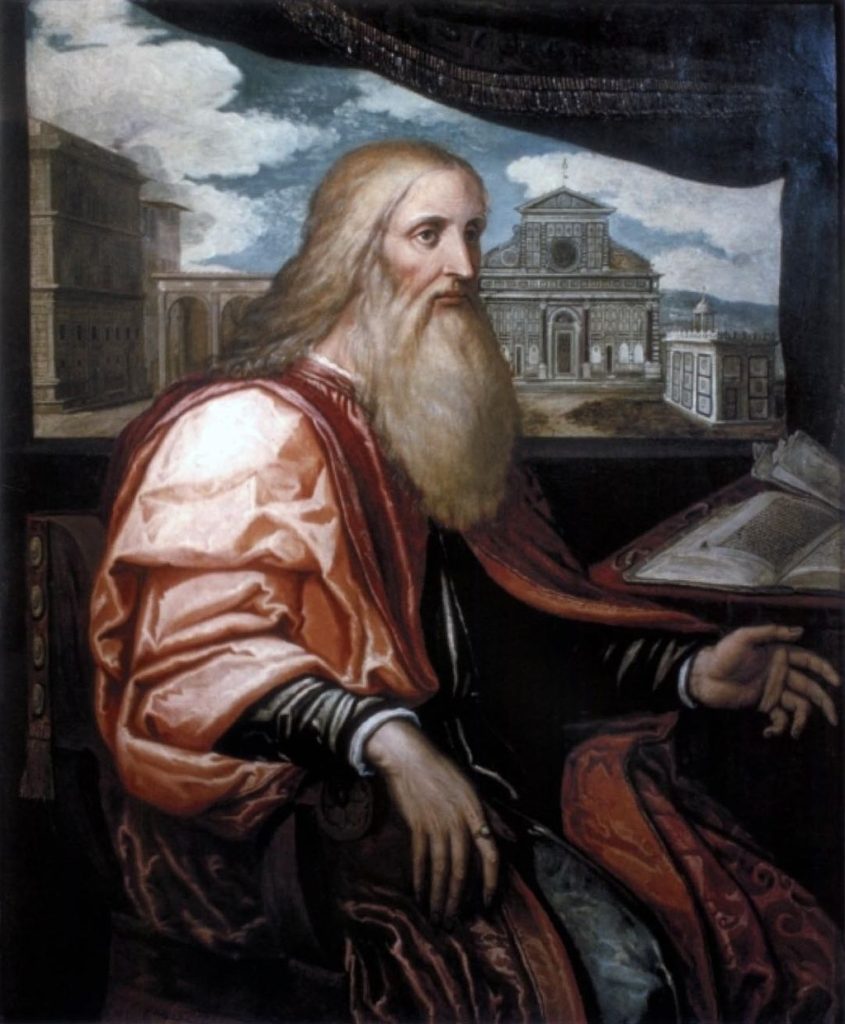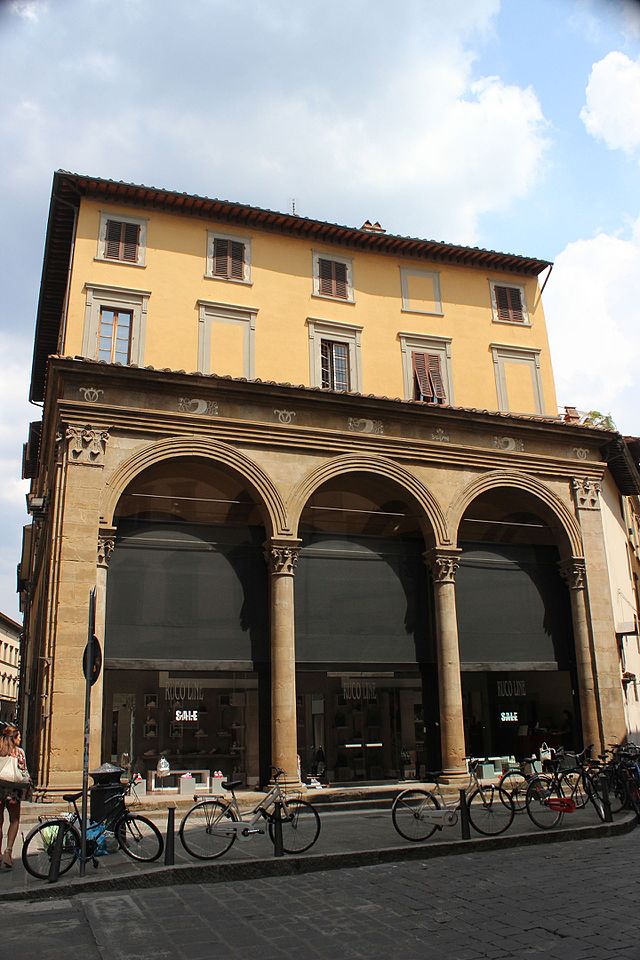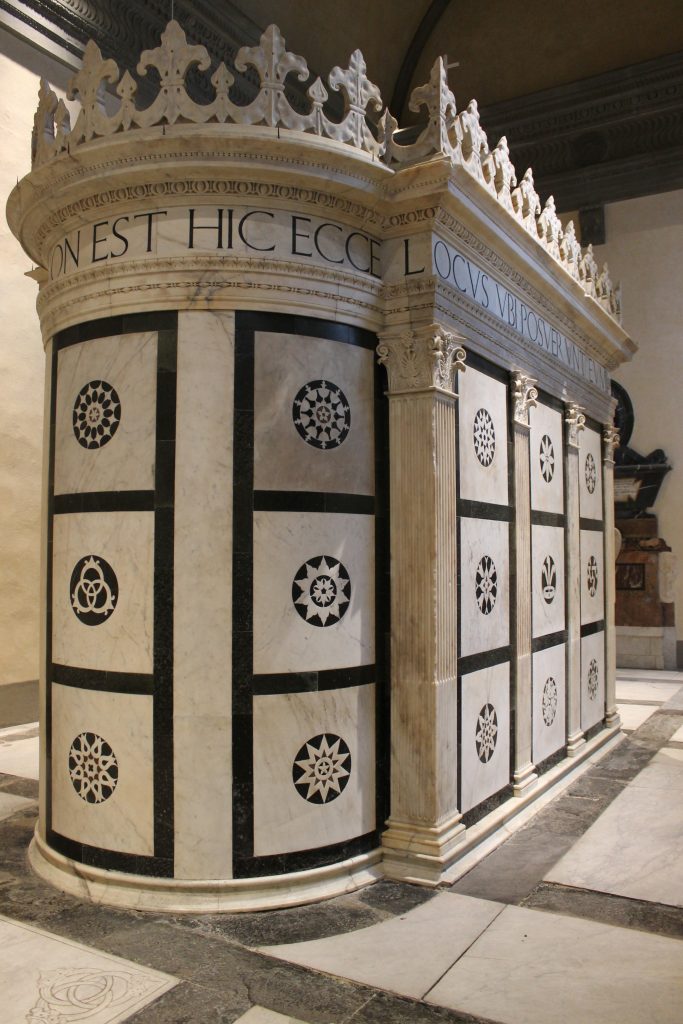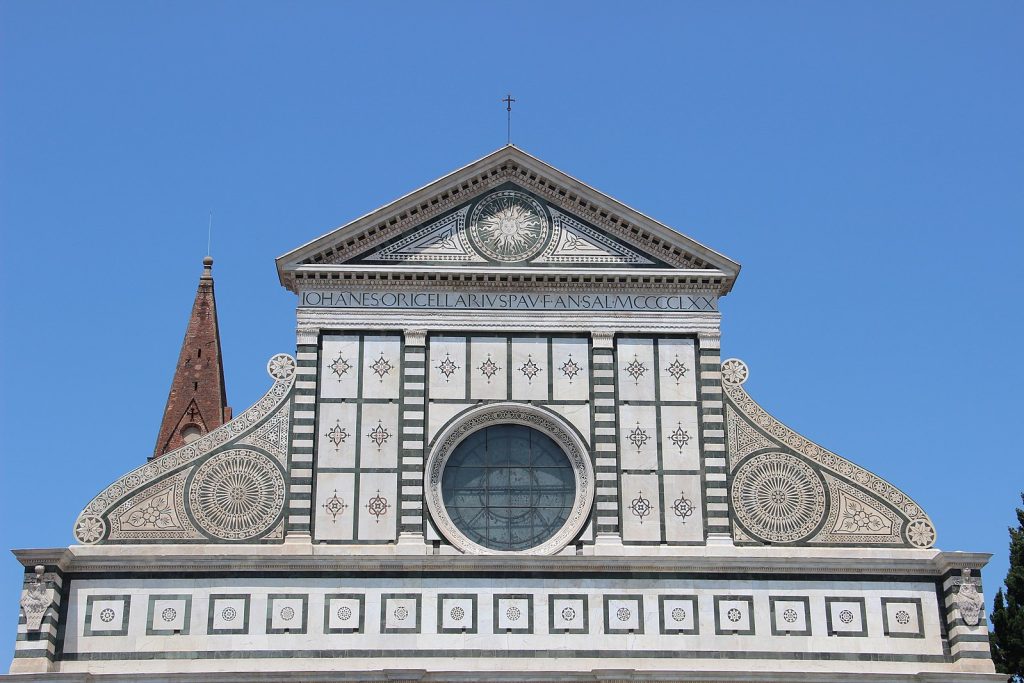On this day in 1403, Giovanni di Paolo Rucellai was born in Florence.
A member of the Florentine patrician Rucellai family (who had made their fortune as wool merchants) Giovanni Rucellai was an important political figure in fifteenth-century Florence, holding posts under Cosimo and then Lorenzo de’ Medici. Around the age of 25 he was married to Iacopo di Palla Strozzi, the daughter of the illustrious Palla di Noferi Strozzi, whose banking house he then entered. Rucellai remained in Florence despite the exile of the Strozzi in 1434, and his second son, Bernardo, subsequently married Nannina de’ Medici, the daughter of Piero di Cosimo de’ Medici.
Giovanni Rucellai is perhaps best remembered, however, as a writer and a key patron of the arts. This is represented in a later portrait of the figure (c. 1540), which depicts him alongside his principal commissions in Florence, all constructed on the design of architect Leon Battista Alberti. These include the Palazzo Rucellai, along with the Rucellai Loggia (where the marriage of Bernardo and Nannina was celebrated in 1466), the marble façade of Santa Maria Novella, and Rucellai Sepulchre in the church of San Pancrazio. The latter was built as a personal funerary chapel for Giovanni, in emulation of the Holy Sepulchre in Jerusalem. Despite the de-consecration of the church of San Pancrazio in 1808, the sepulchre still survives in the Museo Marino Marini in Florence.
Along with his role as patron, Rucellai was also a prolific writer. His best known-work is his Zibaldone, begun in 1457. This includes translations of Latin and Greek texts, as well as a miscellany of notes of advice to his children, and commentaries on significant Florentine figures of his time, including his father-in-law Palla.





